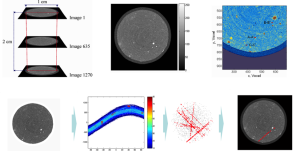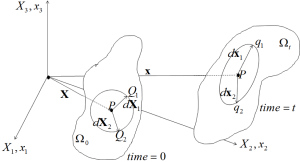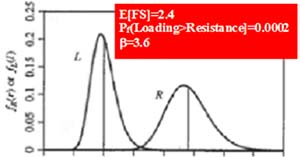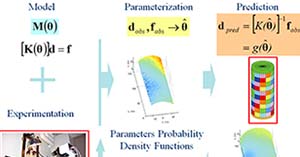Undergraduate
CVEN-305 Mechanics of Materials
 The objective of this course is to introduce students to applications of stress and deformation relationships for structural members subjected to axial, torsional, and bending loads, and thin-walled pressure vessels. Students will study stress and deformation of structural members under combined loadings, stability of columns, including indeterminate members.
The objective of this course is to introduce students to applications of stress and deformation relationships for structural members subjected to axial, torsional, and bending loads, and thin-walled pressure vessels. Students will study stress and deformation of structural members under combined loadings, stability of columns, including indeterminate members.
CVEN-365 Introduction to Geotechnical Engineering
 The objective of this course is to introduce basic concepts geotechnical engineering to address three specific soil mechanics behaviors: hydraulic conductivity, strength and compressibility. Students will study the origin of soils and grain sizes, fundamental physical properties of soils, engineering classification of soils, soil compaction, permeability, stress distributions in a soil mass, and soil strength and compressibility.
The objective of this course is to introduce basic concepts geotechnical engineering to address three specific soil mechanics behaviors: hydraulic conductivity, strength and compressibility. Students will study the origin of soils and grain sizes, fundamental physical properties of soils, engineering classification of soils, soil compaction, permeability, stress distributions in a soil mass, and soil strength and compressibility.
Graduate
CVEN-651 Geomechanics
 The objective of this course is to introduce fundamental concepts of geomechanics, treating geomaterials as a continuum media, in both Lagrangian and Eulerian descriptions, and representing from linear to non-linear deformations. The emphasis of the course is on the student’s development of basic skills to pursue research in geomechanics or in any other related fields through the study of fundamentals of tensor algebra, and tensor representations of kinematics, strain, stress, balance principles and elastic material properties.
The objective of this course is to introduce fundamental concepts of geomechanics, treating geomaterials as a continuum media, in both Lagrangian and Eulerian descriptions, and representing from linear to non-linear deformations. The emphasis of the course is on the student’s development of basic skills to pursue research in geomechanics or in any other related fields through the study of fundamentals of tensor algebra, and tensor representations of kinematics, strain, stress, balance principles and elastic material properties.
CVEN-655 Risk and Reliability Assessment (Listed as Structural Reliability)
 The objective of this course is to introduce theoretical and computational methods required to assess the state of risk of engineering structures and systems by considering: Risk = Hazard · Vulnerability · Consequences. Students will study the use of Bayesian Methods to assess safety problems defined from: Single to multiple threats: natural and man-induced, single to multiple consequences or impacts (social, economic and environmental), single to multiple structural or process components, single to multiple scales and dimensions (space and time), and with varying data and model complexity.
The objective of this course is to introduce theoretical and computational methods required to assess the state of risk of engineering structures and systems by considering: Risk = Hazard · Vulnerability · Consequences. Students will study the use of Bayesian Methods to assess safety problems defined from: Single to multiple threats: natural and man-induced, single to multiple consequences or impacts (social, economic and environmental), single to multiple structural or process components, single to multiple scales and dimensions (space and time), and with varying data and model complexity.
CVEN-689 Stochastic Mechanics
 The objective of this course is to introduce probabilistic techniques for the solving of inverse problems of mechanical nature. The course focus is in simulating realistic scenarios where both the forward model predictions and the conditioning experimental observations used to parameterize it, may vary. Varying scenarios for the forward model include initial and boundary conditions, loading and excitations, material composition, number of ‘physics’ (mechanics, thermal, hydro, bio, chemical), for the model’s numerical parameters (e.g. mesh resolution, time integration, etc.), and even for the numerical probabilistic sampling (e.g. probabilistic hyper-parameters, sampling step, correlation parameters, etc.). Varying scenarios for the experimental observations may vary in type (e.g. temperature, displacements, pressure, solution content, etc.). Furthermore, the elements of the forward model, the experimental observations, and the numerical probabilistic sampling may vary in space and time. The aim is to measure the impact of formulating mechanistic predictions based on available evidence via Uncertainty Quantification techniques based on Bayesian inference.
The objective of this course is to introduce probabilistic techniques for the solving of inverse problems of mechanical nature. The course focus is in simulating realistic scenarios where both the forward model predictions and the conditioning experimental observations used to parameterize it, may vary. Varying scenarios for the forward model include initial and boundary conditions, loading and excitations, material composition, number of ‘physics’ (mechanics, thermal, hydro, bio, chemical), for the model’s numerical parameters (e.g. mesh resolution, time integration, etc.), and even for the numerical probabilistic sampling (e.g. probabilistic hyper-parameters, sampling step, correlation parameters, etc.). Varying scenarios for the experimental observations may vary in type (e.g. temperature, displacements, pressure, solution content, etc.). Furthermore, the elements of the forward model, the experimental observations, and the numerical probabilistic sampling may vary in space and time. The aim is to measure the impact of formulating mechanistic predictions based on available evidence via Uncertainty Quantification techniques based on Bayesian inference.